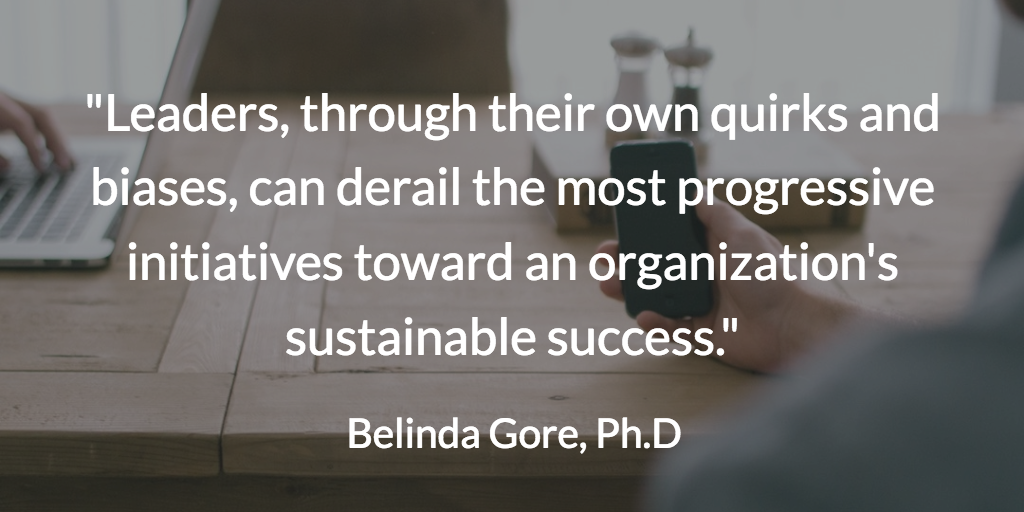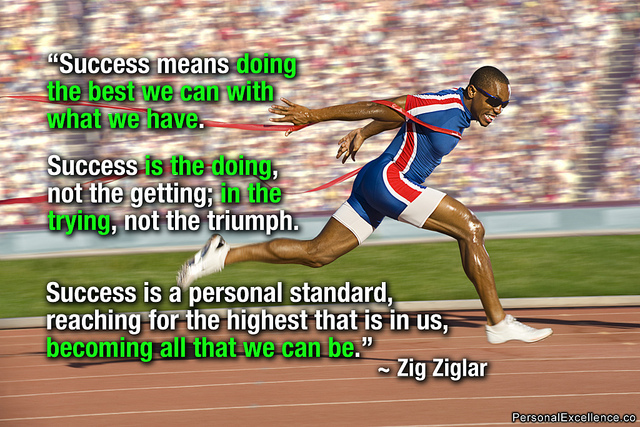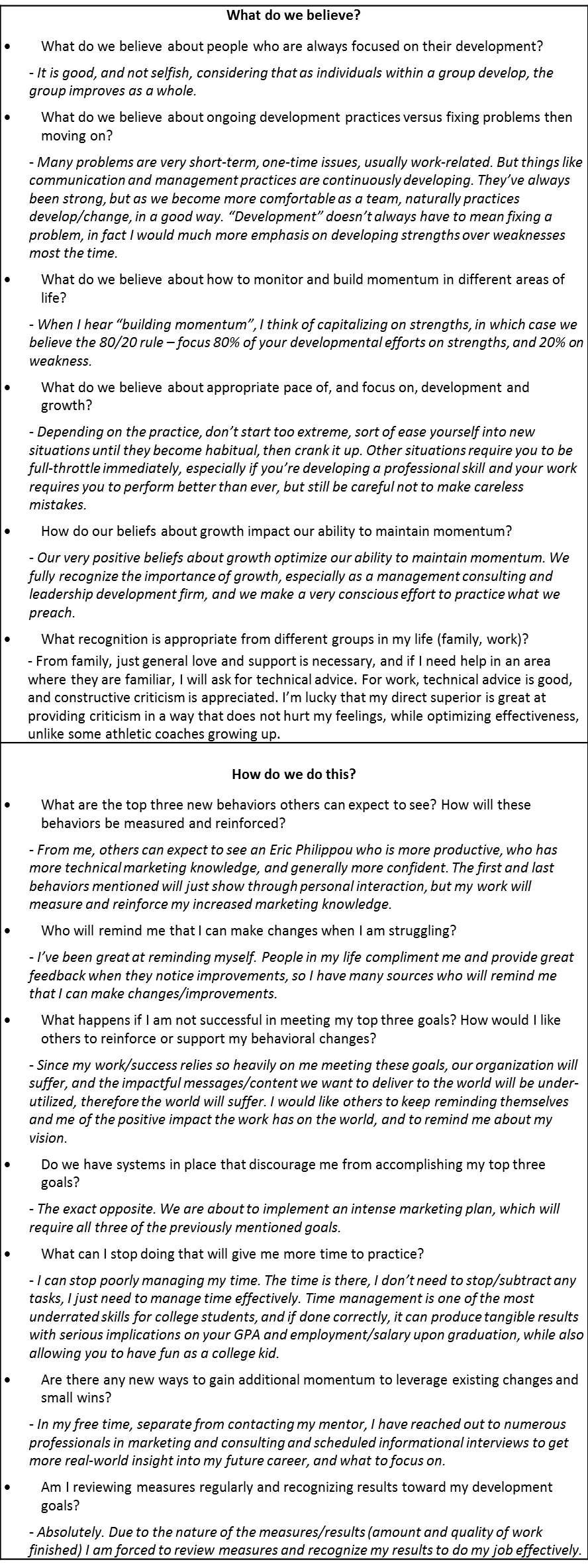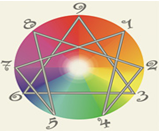Leveraging Personality Type to Improve Leadership Effectiveness

This guest blog was written as a companion to the podcast with Belinda Gore, Building Leadership Self-Awareness Using Personality Type. In the interview and the blog, Belinda explores how she uses the Enneagram to help leaders build the self-awareness that enables them to perform effectively.
This post contains some excerpts from the Innovative Leadership Fieldbook by Maureen Metcalf and contributing author Belinda Gore.
Let’s start with the example of Ken, an experienced leader who was making a job change. He realized he was navigating uncharted territory and would no longer be working with the team he knew well and trusted. He would work with new people who didn’t know who he was or how he worked. Because starting a new job is stressful, he must also know his patterns and signs of stress. To help him manage this transition, he revisited his personality assessment to refresh his memory on navigating his stress and understanding his new team better. He found this tool very useful in the past and expected it would be equally valuable as he stepped into a high-visibility role.
When the 65 members of the Advisory Council for the Stanford Graduate School of Business were polled several years ago on the topic of what is most important to include in the school’s curriculum, there was an overwhelming agreement that the most important thing business school graduates needed to learn was self-awareness and the resulting ability to reduce denial in their perceptions of themselves and their actions. Pretty impressive. All the tools of the MBA trade—forecasting, strategic planning, financial analysis, among many, many others—were determined to be LESS important than learning self-awareness skills and the ability to reduce denial. This speaks to the emerging recognition that we highlight in Innovative Leadership: Leaders can derail the most progressive initiatives toward an organization’s sustainable success through their personality quirks and biases.
The name “Enneagram” derives from the Greek for nine (ennea) and a figure (grama). Hence, the Enneagram symbol of a circle with nine equidistant points around the circumference. The symbol itself is ancient. Using the symbol as a map, we can describe patterns of personality and highly effective pathways for personal change. In my experience using the Enneagram system as a psychologist and leadership coach over the past twenty-three years, I find it more robust than any other system I have encountered. Many organizations are familiar with DISC, MBTI, Strengths Finder, and other systems, and training in these models has given employees at every level of organizations a foundation in models for self-awareness. I have found leaders at every level able to readily learn the richer and more versatile information the Enneagram offers.
The following section describes the enneagram types.
Type 1—Reformer: The Rational, Idealistic Type
I am a principled, idealistic type. I am conscientious and ethical and have a strong sense of right and wrong behavior. I can be a teacher, crusader, and advocate for change, always striving to improve things but sometimes afraid of making mistakes. Well-organized, orderly, and fastidious, I try to maintain high standards but can slip into being critical and perfectionistic. I typically have problems with resentment and impatience.
At My Best: I am wise, discerning, realistic, and noble. I can be morally heroic.
Type 2—Helper: The Caring, Interpersonal Type
I am a caring, interpersonal type. I am empathetic, sincere, and warm-hearted. I am friendly, generous, and self-sacrificing, but I can also be sentimental, flattering, and people-pleasing. I am well-meaning and driven to be close to others, but I can slip into doing things for others ‘ needs. I typically have problems with possessiveness and with acknowledging my own needs.
At My Best: I am unselfish and altruistic and have unconditional love for others.
Type 3—Achiever: The Success-Oriented, Pragmatic Type
I am an adaptable, success-oriented type. I am self-assured, attractive, and charming. Ambitious, competent, and energetic, I can also be status-conscious and highly driven for advancement. I am diplomatic and poised, but I can also be overly concerned with my image and what others think of me. I typically have problems with being overfocused on work and competitiveness.
At My Best: I am self-accepting, authentic, and a role model who inspires others.
Type 4—Individualist: The Sensitive, Withdrawn Type
I am an introspective, romantic type. I am self-aware, sensitive, and reserved. I am emotionally honest, creative, and personal, but I can also be moody and self-conscious. Withholding myself from others due to feeling vulnerable, I can also feel scornful and exempt from ordinary ways of living. I typically have problems with melancholy, self-indulgence, and self-pity.
At My Best: I am inspired and highly creative and can renew myself and transform my experiences.
Type 5—Investigator: The Intense, Cerebral Type
I am a perceptive, cerebral type. I am alert, insightful, and curious. I can concentrate and focus on developing complex ideas and skills. Independent, innovative, and inventive, I can also become preoccupied with my thoughts and imaginary constructs. I can be detached yet high-strung and intense. I typically have problems with eccentricity, nihilism, and isolation.
At My Best: I am a visionary pioneer, often ahead of my time, and able to see the world in an entirely new way.
Type 6—Loyalist: The Committed, Security-Oriented Type
I am reliable, hardworking, responsible, security-oriented, and trustworthy. I am an excellent troubleshooter and can foresee problems and foster cooperation, but I can also become defensive, evasive, and anxious, running on stress while complaining about it. I can be cautious, indecisive, but also reactive, defiant, and rebellious. I typically have problems with self-doubt and suspicion.
At My Best: I am internally stable and self-reliant, courageously championing myself and others.
Type Seven—Enthusiast: The Busy, Fun-Loving Type
I am a busy, outgoing, productive type. I am extroverted, optimistic, versatile, and spontaneous. I can also misapply many talents, being playful, high-spirited, and practical, becoming over-extended, scattered, and undisciplined. I constantly seek new and exciting experiences but can become distracted and exhausted by staying on the go. I typically have problems with impatience and impulsiveness.
At My Best: I focus my talents on worthwhile goals, becoming appreciative, joyous, and satisfied.
Type Eight—Challenger: The Powerful, Dominating Type
I am powerful, aggressive, self-confident, strong, and assertive. Protective, resourceful, straight-talking, and decisive, I can also be egocentric and domineering. I must control my environment, especially people who sometimes become confrontational and intimidating. I typically have problems with my temper and allowing myself to be vulnerable.
At My Best: I am self-mastering, and I use my strength to improve others’ lives, becoming heroic, magnanimous, and inspiring.
Type Nine—Peacemaker: The Easygoing, Self-effacing Type
I am accepting, trusting, easygoing, and stable. I am usually grounded, supportive, and often creative, but I can also be too willing to go along with others to keep the peace. I want everything to go smoothly and be without conflict, but I can also tend to be complacent and emotionally distant, simplifying problems and ignoring anything upsetting. I typically have problems with inertia and stubbornness.
At My Best: I am indomitable, all-embracing, and able to bring people together to heal conflicts.
One advantage of the Enneagram is that it is organic. The nine personality styles are formed through characteristic ways of balancing the three primary centers of intelligence in the human body. While we typically think of the brain as the center of intelligence, advances in neuroanatomy have demonstrated that there is also a complex system of nerves in the solar plexus region that forms the center of body intelligence and a third complex system of nerves in the center of the chest, known as the heart center of intelligence. These three centers are aligned with the three major parts of the brain: the belly center is aligned with the reptilian brain stem, responsible for instinctual behavior and home of the autonomic nervous system that controls arousal and relaxation; the heart center is aligned with the mid-brain where we encounter the mechanism for fundamental emotion as well as mirror neurons and limbic resonance that account for our capacity for empathy; and the head center is aligned with the cerebral cortex, which includes the analytical and logical left lobe as well as the holistic and intuitive right lobe.
The key to identifying a person’s core Enneagram type is to look beyond behavior to the factors motivating that behavior. Through awareness of motivation, we can predict how leaders and organizations sabotage their best efforts and find the line of least resistance toward getting back on track.
By harnessing the capacity to see your leader type and conditioning objectively and nonjudgmentally, you can foster better insight into your own experience without the strained effort that can stem from self-bias. You discover that the unique patterns that shape each type are genuine and natural and generally do not change much over time. In the most basic way, they reflect who you are most innately. The goal with the leader type is to build self-awareness and leverage strengths, not try to change who you are. Understanding the natural conditioning of the leader type is a crucial stage in developing leadership effectiveness and comprehensive innovation within the organization.
A recommended resource for identifying your own Enneagram personality type is to take an online questionnaire.
About the Authors
Belinda Gore, Ph.D., designs, develops and delivers leadership, assessments, workshops, and coaching. She is a key thought leader in developing the Innovative Leadership framework.
She is a psychologist, executive coach, and experienced seminar leader skilled in supporting her clients in high-level learning. With 30 years experience in leadership development and interpersonal skills training, she is known for helping teams discover strength in their diversity to achieve their mutual goals and works with individual leaders to access their natural talents to maximize effectiveness and personal satisfaction. Her clients have included senior leadership in global companies, senior and middle management in corporate and nonprofit organizations, and entrepreneurs. She will lead our new service line, which is focused on helping leaders and their organizations build resilience. She will also offer leadership team development, board development, coaching, and Enneagram assessment.
Maureen Metcalf, CEO and Founder of Innovative Leadership Institute, is a renowned executive advisor, author, speaker, and coach whose 30 years of business experience provide high-impact, practical solutions that support her clients’ leadership development and organizational transformations. Maureen is recognized as an innovative, principled thought leader who combines intellectual rigor and discipline with an ability to translate theory into practice. Her operational skills are coupled with a strategic ability to analyze, develop, and implement successful profitability, growth, and sustainability strategies.



